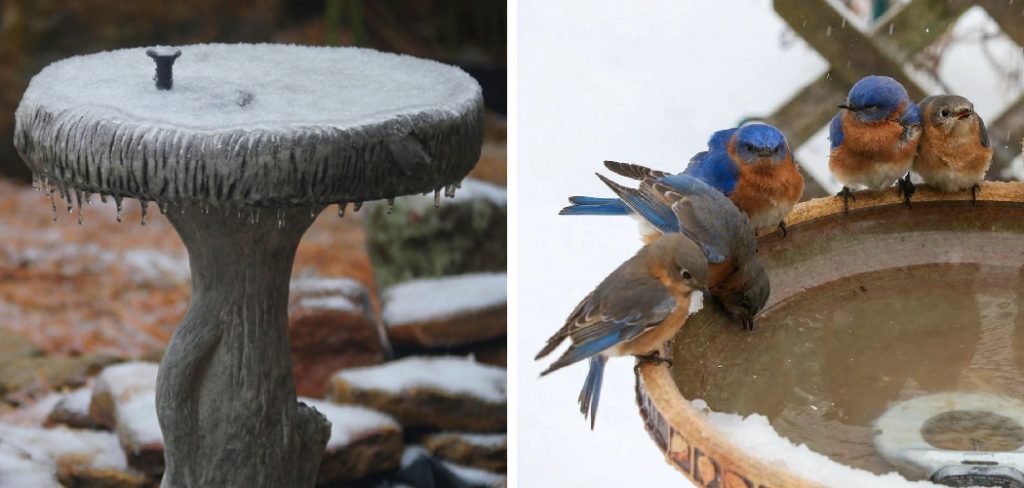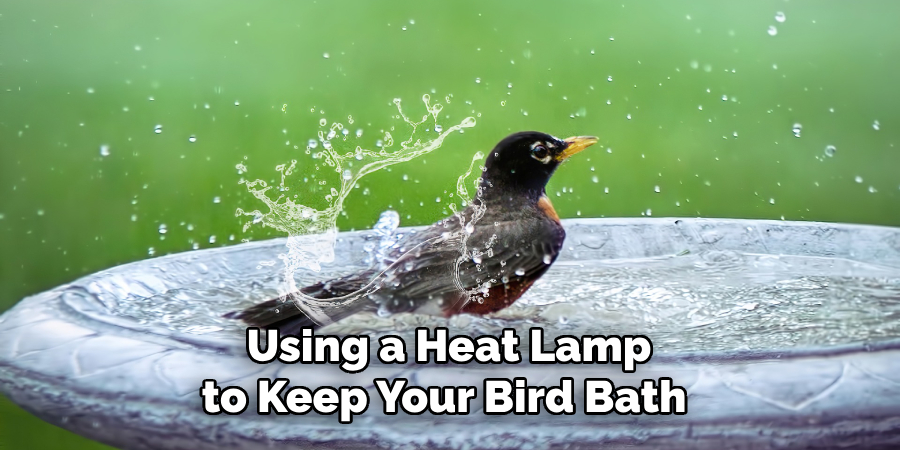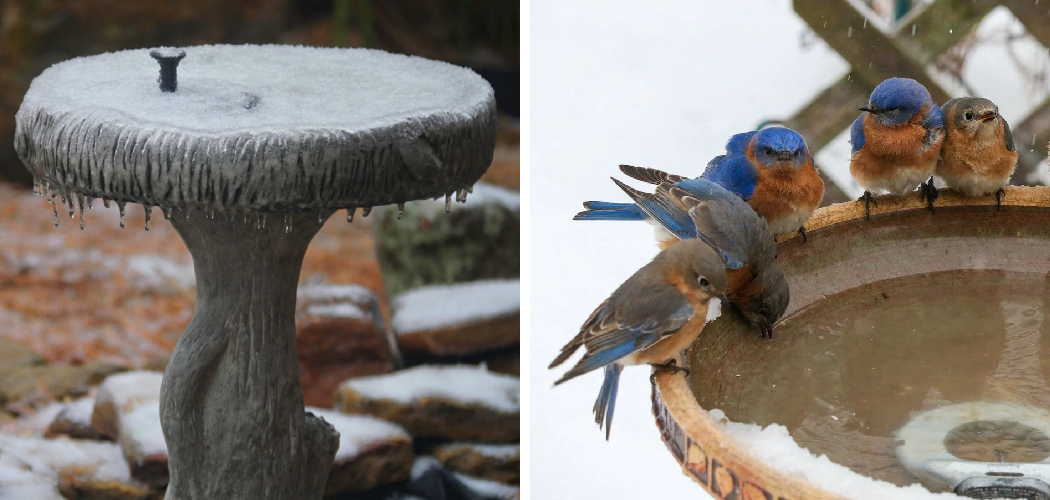To keep a bird bath from freezing, use a bird bath heater or a heated bird bath. This will prevent the water from freezing and provide birds with a source of water during cold weather.
Additionally, positioning the bird bath in a sunny area and using a shallow design can help to prevent freezing. Providing a nearby water source, such as a fountain or dripping hose, can also discourage freezing. It is important to regularly check and clean the bird bath to ensure it remains functional and safe for birds.
By following these methods, you can keep your bird bath from freezing, providing birds with essential water throughout the winter months.

How to Keep Bird Bath from Freezing: Step by Step Guide
Understanding The Problem
Understanding the problem of freezing bird baths is crucial for bird enthusiasts. The science behind freezing bird baths lies in the phenomenon of water’s ability to turn into ice at lower temperatures. Frozen bird baths pose a threat to birds as they limit their access to open water.
Birds rely on water for drinking, bathing, and even thermoregulation during winter. Providing open water sources is vital to sustain their survival and health. To keep bird baths from freezing, various solutions can be applied, such as using de-icers or heated bird baths.
Taking these measures ensures that birds have access to the water they need even in freezing temperatures.
Tips For Keeping Bird Baths From Freezing
Maintaining a bird bath in freezing temperatures can be challenging, but there are ways to ensure it stays ice-free. One important factor is choosing the right location for your bird bath. Select a spot that receives ample sunlight and is sheltered from strong winds.
Additionally, opting for bird baths that are less prone to freezing can be helpful. Look for designs with deeper basins and narrower edges, as they allow for better water circulation. Lastly, consider using a bird bath heater. These devices gently warm the water, preventing it from freezing over.
By following these tips, you can create an inviting and accessible water source for birds throughout the winter season.
Diy Methods To Prevent Bird Baths From Freezing
Insulating your bird bath is one effective diy method for preventing it from freezing. Using insulation material keeps the water temperature more stable. Adding a floating object, like a rubber ball or cork, creates movement that prevents ice formation. Building a solar bird bath heater is another option.
It uses the sun’s energy to keep the water warm. This can be done by placing a solar panel near the bird bath. The panel then powers a heater that keeps the water above freezing temperatures. By implementing these methods, you can ensure that your bird bath remains ice-free throughout the winter season.
Other Considerations
When it comes to keeping your bird bath from freezing, there are a few other considerations to keep in mind. One important aspect is cleaning the bird baths during winter to prevent any build-up of ice or debris. Extreme cold temperatures can pose a challenge, so it’s essential to take proactive measures to ensure the bird bath stays usable.
Regularly check for ice and remove it promptly. Additionally, consider using a heated bird bath or adding a heater to keep the water from freezing. Another helpful tip is to place a floating object, such as a rubber ball, in the bird bath.
This will help create movement and prevent ice formation. By following these tips and being proactive in your bird bath maintenance, you can ensure that your feathered friends have access to clean, unfrozen water throughout the winter season.
Frequently Asked Questions On How To Keep Bird Bath From Freezing
How Can I Prevent My Bird Bath From Freezing?
To prevent your bird bath from freezing, you can try using a bird bath heater. These heaters keep the water warm, preventing it from freezing in cold temperatures. Another option is to place a floating ball on the surface of the water.
This will help create movement and prevent freezing.
Can I Use Antifreeze In My Bird Bath?
No, you should never use antifreeze in your bird bath. Antifreeze is toxic to birds and can harm or even kill them if ingested. It is important to find bird-safe alternatives to prevent your bird bath from freezing, such as a bird bath heater or a floating ball.
What Else Can I Do To Keep My Bird Bath From Freezing?
In addition to using a bird bath heater or a floating ball, you can also try insulating your bird bath. You can do this by placing insulating materials, such as foam or bubble wrap, around the edges of the bird bath.
This will help keep the water warmer for longer periods of time.
How Often Should I Clean My Bird Bath In Winter?
It is important to clean your bird bath regularly, even in winter. During colder months, bird droppings and debris can accumulate in the water, leading to bacteria growth. Aim to clean your bird bath at least once a week to keep it clean and hygienic for the birds.
Can I Use A Heat Lamp To Keep My Bird Bath From Freezing?
Using a heat lamp to keep your bird bath from freezing is not recommended. Heat lamps can be a fire hazard and may overheat the water, potentially harming the birds. It is best to use bird-safe alternatives, such as a bird bath heater or insulating the bird bath, to prevent freezing.

Conclusion
Keeping your bird bath from freezing is essential to ensure the well-being of your feathered friends during the colder months. By following a few simple steps, such as adding a heater or using a floating deicer, you can easily prevent the water from freezing over.
Additionally, regularly checking and refreshing the water, and providing a shallow depth will attract more birds to your bird bath. Remember to keep the surrounding area clean and free from debris, as this will help to maintain water quality and prevent any potential damage.
By implementing these techniques, you can enjoy watching birds thrive and bathe all winter long. So, take the necessary precautions and create a welcoming oasis for our avian neighbors, even when the temperatures drop.

